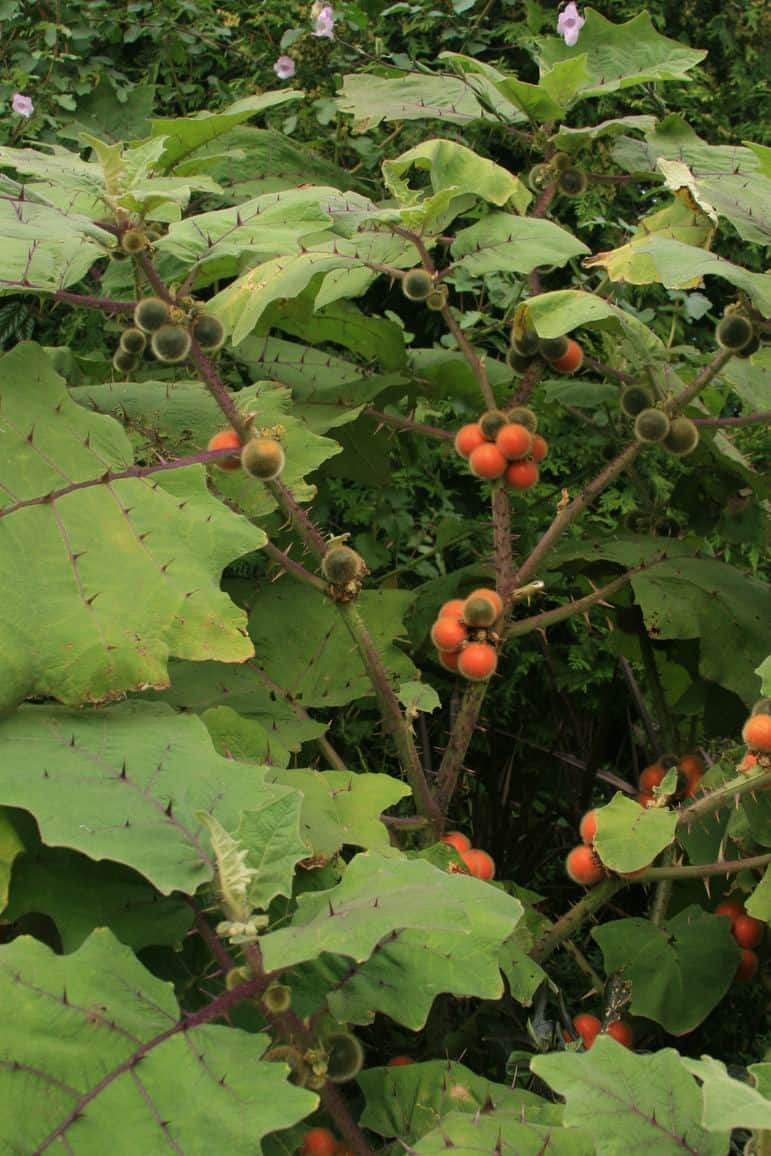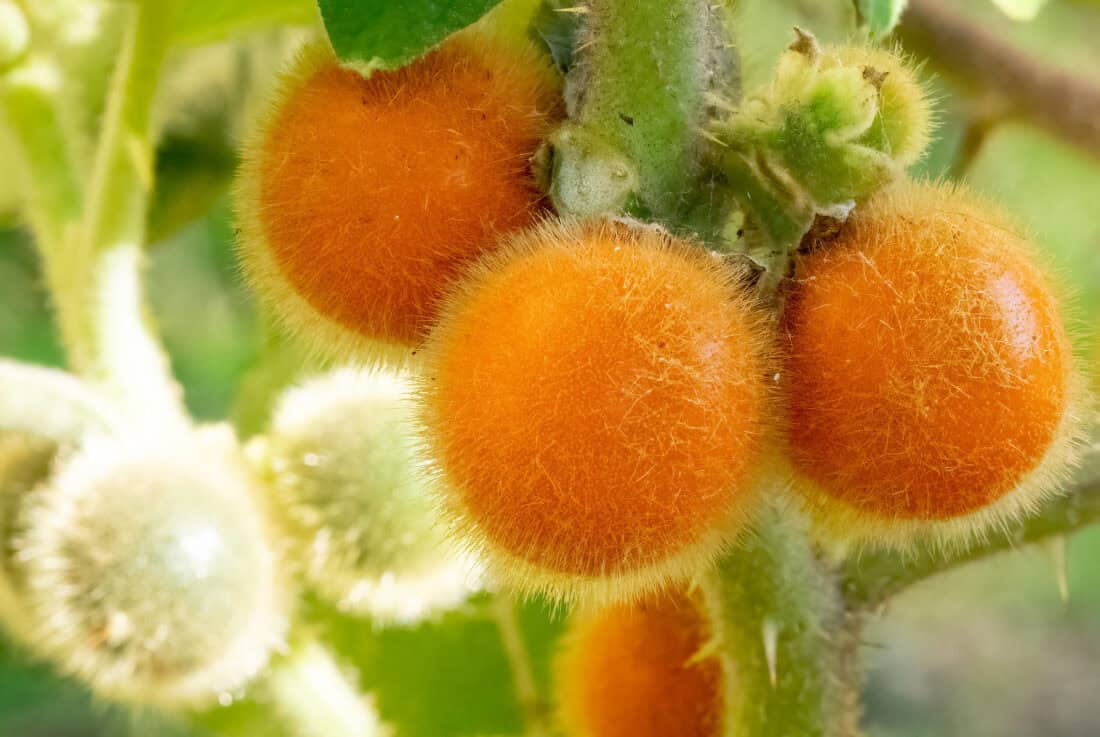It seems like yesterday it was Memorial Day, and all of the summer residents to Maine were just rolling into town, and we were rolling out our summer annuals. When I look back at photographs taken early in the season, its amazing to see just how small all of these plants were in May. As the temperatures warmed, our plants grew. Some plants grew more than others and these are the ones we are noting to use again in different ways for next year’s displays.

Growing Bed of Nails Plant – Solanum quitoense in the Edible garden
Bed of Nails plant was one of the show-stoppers of our summer display. We had an exhibition of Lunaform pots at CMBG all summer long. In our Burpee Kitchen Garden, there were 4 matching pots that our kitchen gardener filled to the brim with plants. The centerpiece of the arrangement was Solanum quitoense or “bed of nails plant.”
The common name for this tomato relative comes from the nearly inch-long, purple spikes emanating from the plant’s leaves, stems, and main stalk. Another common name is naranjilla, although this is primarily associated with the non-spiky plant’s fruit rather than its leaves.
A native of Peru, Ecuador, Colombia, and Venezuela, it can grow up to 8 feet tall in cultivation, although in our short summer of Maine, we will be lucky if ours reaches 3-4 feet in height by the end of the summer. It is an annual so we can propagate ours through cuttings or by saving the seeds from the fleshy, bright orange fruit.

An individual leaf on these plants can be over a foot in length and 10″ or more in width. They are fuzzy, light green with a purple tinge, and the aforementioned imposing purple spikes. People who have never seen these plants before cannot believe that such a macabre plant really exists. I remember when I saw one for the first time 15 years ago at Swarthmore College. I did a double take and then, of course, immediately wanted one.
I would suggest that you grow this annual out of the reach of children. The spikes not only look sharp, they are sharp! Grow Solanum quitoense in rich, well-drained soil in part-shade to full sun. The warmer your climate, the more shade I would give this plant in the middle of the summer.
-Rodney

Thanks for the info! I saw this plant in Swarthmore, PA this summer in Andrew Bunting’s garden and had no idea what it was. I fell in love with it, even after I got stabbed. It’s a killer plant–in all ways.
Yikes! This is a new one to me. Looks as though it could be very effectively used as a security device to keep people out of your gardens! 🙂
Interesting! How on earth do you not go through an entire box of Band-Aids when planting, propagating, or pruning this plant?